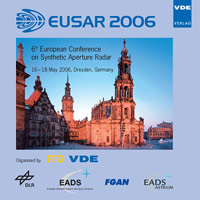Emulated Bistatic Synthetic Aperture Imaging: Real World Data Analysis - Pt II - SAR
Conference: EUSAR 2006 - 6th European Conference on Synthetic Aperture Radar
05/16/2006 - 05/18/2006 at Dresden, Germany
Proceedings: EUSAR 2006
Pages: 4Language: englishTyp: PDF
Personal VDE Members are entitled to a 10% discount on this title
Authors:
Palmer, James; Homer, John (The School of ITEE, The University of Queensland, AUSTRALIA)
Littleton, Brad (The School of Physical Sciences, The University of Queensland, AUSTRALIA)
Martorella, Marco (Dept. of Information Engineering, University of Pisa, ITALY)
Abstract:
Recent work by the authors introduced the concept of the Emulated Bistatic Radar (EBR). In an EBR, an airborne monostatic radar is configured to emulate a bistatic radar by employing the reflective nature of the sea’s surface to create a “pseudo-transmitter”. The EBR concept was developed to address the situation where the monostatic radar cross section of the target had been modified or designed to ensure minimal backscatter in the direction of the transmitter, as in the case of stealth. Following this work EBR geometries were considered in conjunction with highly coherent radar signal processing techniques, including both SAR and ISAR. Combining synthetic aperture radar processing techniques with an EBR’s geometry introduces the possibility of achieving three effective standard synthetic apertures using an airborne SAR platform over the open ocean or any other large reflective bodies. This could prove beneficial by providing extra information about the target scene, or through the generation of stereoscopic SAR images. This paper forms an extension to the EBR SAR research that was previously presented at EUSAR 2004. In this paper, Real World SAR campaign data that was provided by NASA’s JPL is discussed.


